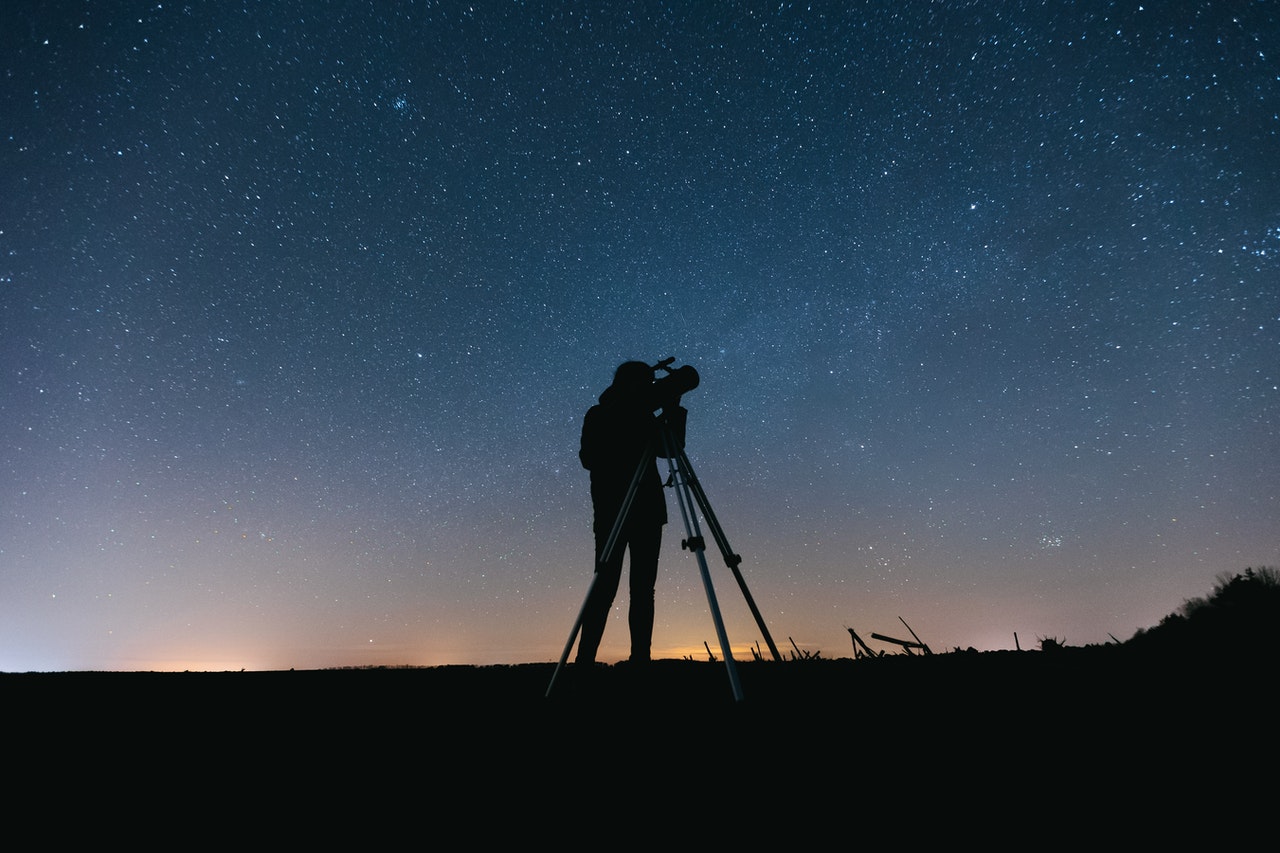
The acquisition of your first telescope is a momentous occasion, and you’ll probably want to use it right away by taking it outside on the first night. With a telescope, you can see many spectacular things in the night sky that you otherwise wouldn’t be able to.
But it might be intimidating to use a telescope for the first time. If you don’t take a few easy steps, you can be impatient and disappointed with your new telescope.
Before attempting to use your telescope for stargazing, you should try to become familiar with the lens and moving parts that telescopes contain.
And if you feel you can’t get enough space themes and the galaxies beyond, don’t forget to check out galaxy wall art from space artist Agnes My Universe.
Before Leaving the House
Set up your telescope indoors first so you can see clearly what you should do with the setup. It’s pretty tricky to set it up outside at night, whether it’s your first or tenth time, so it’s best to practice while you can see what you’re doing.
Please verify that you have all the necessary components and that they are all functioning correctly. To keep the eyepieces, the front cover, the lens caps, and other miscellaneous parts organized, you might wish to find a compact box.
Consult The Professionals
Consider joining your local astronomy organization if you’re still unsure of which telescope to purchase or if you’re having problems using it. These societies number in the hundreds, and their members are specialists in equipment for seeing the stars. They’ll be of great assistance to you, maybe to the point where one day they’ll be asking you for telescopic advice.
Putting Your Finderscope in Place
Unless it is a tiny telescope, your finderscope, a miniature telescope that mounts to the tube of your main scope and points in the same direction, will be included with your purchase.
This finderscope helps spot objects in the sky when you require a comprehensive view because it has a considerably lesser magnification than your primary scope and hence a much greater field of vision. You must align your finderscope with the primary telescope so that they are both pointing in the same precise direction to get the most of your finderscope.
It is possible to align your finderscope and telescope using a brilliant star or planet. Still, it is far simpler to do it during the day using a distant landmark, such as a chimney, mast, tower, hill, home, or anything else visible.
There are several advantages to setting the finderscope in the daylight.
· In the daytime, you can see what you’re doing.
· Unlike the stars, which seem to move as the Earth spins, your target won’t change position.
· Unlike at night when all stars appear to be the same, during the day, you will be positive that you are staring at the same target.
You could be taken aback by how inverted the picture seems when seen through your telescope and finderscope. But, of course, astronomy doesn’t care since a planet that is upside down appears quite similar to one that is upright. Yet when orienting your finderscope, it could be perplexing to gaze at things on Earth.
Never point your telescope directly towards the Sun. Instead, ensure the Sun is not in the area if your alignment target is on the horizon with a clear sky behind it.
Aligning your telescope and finderscope involves:
1. Center your alignment target in the main scope’s field of vision.
To assist you in centering the target precisely, your scope may have come with a crosshair adapter that you may affix to your eyepiece.
2. Using the little screws attached to the finderscope, adjust it so that your crosshairs are perfectly centered on your target.
3. Check and adjust your finderscope and telescope repeatedly until you are sure they are pointing in the same direction.
You will align your telescope and finderscope. This means that you may use your finderscope to locate objects when stargazing at night and be sure that your target will also be visible in your main scope.
You must avoid throwing your telescope and finderscope out of alignment once they are in position. You’ll have to start from scratch if not. Also, never carry your telescope using the finderscope as a handle!
Utilizing Your Telescope’s Focus
Learning how to focus your telescope is a valuable daytime pastime. However, when using a telescope to see the night sky, you must frequently change the focus because each person’s eyes are unique. Therefore, before attempting to focus your telescope in the dark, you should know how to do it.
The light is magnified and focused for your eyes by the eyepieces. You may modify the focus, so that fuzzy stars become crisp points of light by gradually shifting their positions. You may change the focus by moving a little knob or dial close to the eyepiece tube.
Since each telescope varies somewhat from the next, you need to consult your telescope’s instruction booklet to identify your focus control.
Once you’ve located the focus knob, aim your telescope at a distant object—but not one close to the Sun! — and adjust the focus until you obtain a clear image. Practice identifying the focus control and adjusting it without looking while adjusting the focus while looking through the eyepiece. You should be able to change the focus at night to make all the stars appear as excellent dots after you focus.
Telescopes cannot readily concentrate on local targets since they are designed for gazing at far-off things like stars and planets. So, if a nearby target is difficult to focus on, don’t be shocked; instead, try searching for something farther away.
Do not become alarmed if you look through your telescope and observe weak rings of light rather than distinct dots.
These rings are still stars, but they are blurred out because of how out of focus your telescope is. For these rings to become perfectly focused individual dots, try making significant modifications to your focus until they get smaller and smaller.
Preparing And Winding Down
You may use your telescope outside to see the stars once you’ve set it up indoors and grown comfortable with it. Place your telescope on a level, secure surface far from any potential dangers, such as pits or ditches, that you may fall into at night.
Try to set up your telescope such that there is a lot of unobstructed sky above you (so well away from trees or buildings). Additionally, remember that solid lights might blind you when stargazing and impair your ability to see at night.


